Call Sound Issues with iPhone? 23 Tips to Troubleshoot & Fix iPhone Call Quality Problems
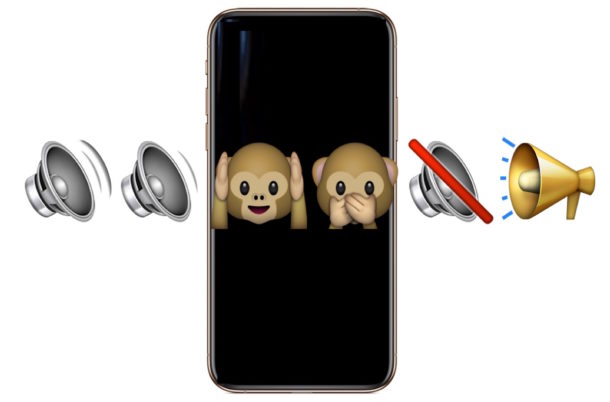
Does the audio quality of iPhone sound bad when you’re making or receiving phone calls? Are you struggling to understand what people are saying on the phone, or they have a hard time hearing you as you talk on your iPhone?
Occasionally, some iPhone users report that phone call audio is muffled, sound distant, sounds crackly, calls breaking up, hard to hear, people can’t hear what you’re saying, you can’t hear what they’re saying, and other call sound issues. This can happen on just about any iPhone model, but more recently people are sometimes complaining about call sound problems on iPhone XS, iPhone XS Max, iPhone XR, iPhone X, iPhone 8 Plus, iPhone 8, and iPhone 7 models, often with the speaker or microphone, and both for outbound calls and inbound calls.
There are many different possible reasons why iPhone call quality may sound bad, and this guide will attempt to troubleshoot these type of issues with iPhone call sound and call quality, offering a range of tips and tricks to resolve and fix call audio problems.
23 Tips to Troubleshoot iPhone Call Sound Problems
We’ll run through a wide variety of tips to troubleshoot iPhone call quality problems, call sound issues, difficulties with iPhone calls sounding poor or low quality, breaking up and difficult to understand, muffled, and other similar issues.
Important: Be sure you back up the iPhone to iCloud or iTunes before beginning. This allows you to restore the iPhone to the current state in the event that something goes wrong (which might be unlikely, but is always possible with anything in life and particularly with technical stuff).
1: Update iOS System Software
If an iPhone system software update to iOS is available, install that update before going any further. If there is a software bug or known issue, it is likely resolved by a new iOS software update.
First backup the iPhone to iCloud or iTunes, and then do the following:
- Go to “Settings” app, then go to “General” and to “Software Update”
- Choose Download & Install for any available iOS software update
The iPhone will instal the system software and automatically reboot when finished. Try making a phone call again afterwards, the call issue may be resolved.
2: Make Sure iPhone Volume Turned Up
This might sound obvious, but if phone calls sound distant and quiet to you, then you will want to make sure iPhone sound volume is turned all the way up.
The iPhone actually has several different volume settings that can be independent from one another, so the best way to turn volume up for a phone call is to make a phone call and then press the Volume Up button on the side of the iPhone repeatedly until the volume indicator is all the way full.
If you’re not sure who to call for this purpose, try any toll-free 800 number with a long hold time or a menu system.
3: Turn AirPlane Mode ON and OFF
Toggling AirPlane mode ON, waiting a few seconds, and then OFF will effectively disconnect and reconnect all communication on the device, including the cellular modem, Bluetooth, and wi-fi.
- Open “Settings” app and locate “AirPlane Mode” and turn that ON
- Wait about 10 seconds, then turn AirPlane Mode back OFF
Cycling of the devices communication radios can often remedy call issues, and it may force the iPhone to join a different cellular tower which can resolve some cellular sound quality problems too.
Note that AirPlane Mode must be OFF for the iPhone to make or receive any phone call, when it is turned on the device can not communicate with the outside world as the cellular, bluetooth, and wi-fi radios are off. Don’t forget this, disable AirPlane Mode!
4: Reboot iPhone
Often a simple reboot of iPhone will resolve various issues, so give your iPhone a quick restart and see if it helps.
You can perform a soft restart by turning iPhone off, then turning it back on again.
You can also force restart the iPhone. How to forcibly restart an iPhone differs per device model:
- How to force restart iPhone XS, XS Max, XR
- How to force restart iPhone X
- How to force restart iPhone 8 Plus, iPhone 8
- How to force restart iPhone 7, 7 Plus
- How to force restart iPhone 6s, 6, 6s Plus, 6 Plus, iPhone SE, iPhone 5s, iPhone 5, iPhone 4s, and older
5: Reset iPhone Network Settings
You may find that resetting network settings in iOS could resolve phone call issues. Note that by resetting device network settings, you will lose all saved wi-fi passwords, wi-fi network preferences, cellular settings, network settings, network customizations like DNS, etc. Thus you might want to jot down important wi-fi passwords ahead of time, as you will have to enter them all again later.
- Open the “Settings” app then go to “General” and to “Reset”
- Tap on “Reset Network Settings” and confirm that you want to reset network settings.
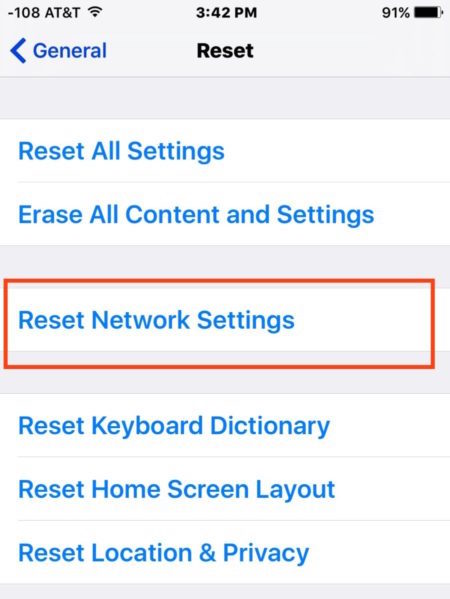
The iPhone will automatically reboot. Remember, you will need to re-join wi-fi networks and re-enter wi-fi passwords, and if you made any other customizations or changes to network settings those will be lost in the network settings reset too.
6: Check iPhone Cellular Signal
If the iPhone has a poor cellular signal, call quality may suffer. If the iPhone cellular signal is low (1 bar, sometimes even 2 bars) then call quality will almost certainly suffer as well and sometimes calls can break up, crackle, or sound very low quality. Often with poor cellular reception, the iPhone call will drop completely.
You can check the cellular signal of iPhone by looking at the top of the iPhone, and then look for the bars (or dots for some iOS versions). 4 bars is great, 3 bars is good, 2 bars is OK, 1 bar is not good, and 0 bars is No Service (meaning no cellular connection at all).
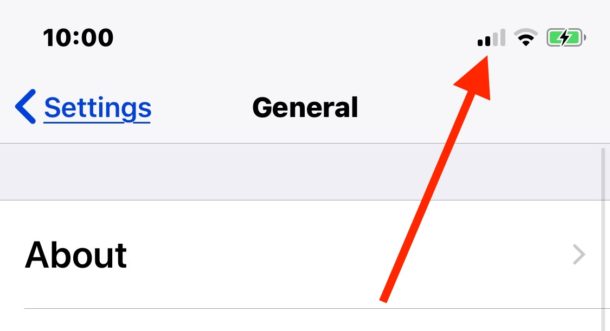
If you’re on the techier/geekier side, you can also put iPhone into Field Test Mode (iOS 12 and iOS 11) (or for older models, using field test in older iOS versions) and check cellular signal and tower reception that way, but that’s not for most users.
7: Enable iPhone Wi-Fi Calling
Be sure to enable wi-fi calling on iPhone if possible, assuming the iPhone and carrier support the feature. This allows you to use the wi-fi connection rather than only the cellular connection to make a phone call, and this can make a huge difference in call quality.
- Open “Settings” app, then go to “Phone” and to “Wi-Fi Calling” and toggle the feature ON

This is a particularly useful calling feature to use if the iPhone is located in an area with bad cellular reception, or an area where phone calls routinely drop or sound bad.
8: Turn Bluetooth Off, then Back On
If you use a Bluetooth device, headset, speaker, stereo, car stereo, or other Bluetooth connection for phone calls, you may find that toggling Bluetooth off and on can resolve quality issues.
- Open “Settings” app, then go to Bluetooth > turn OFF, wait 10 seconds, toggle Bluetooth back ON
Try making a call again through the Bluetooth speaker system,
Sometimes simply turning Bluetooth off, waiting a few seconds, then turning Bluetooth back on again can resolve call quality issues.
9: Try Using LTE for Data Only
Sometimes toggling a setting to force iPhone to use LTE for data only can improve call performance.
- Open “Settings” app, then go to Cellular > Cellular Data Options > Enable LTE > choose “Data Only”
This settings change has remedied calling issues for many iPhone users, though do note that it will cause the iPhone to use the 3G network instead of LTE network for making phone calls.
You can change the cellular setting back to “Data & Voice” at any time if necessary.
10: Disable Phone Noise Cancelation
Phone Noise Cancelation aims to reduce ambient noise when the iPhone is held up to the ear for phone calls, and it usually works great. Nonetheless, some users report that disabling phone noise cancelation can lead to improved call quality, and thus it may be worth trying to turn this feature off:
- Open the “Settings” app, then go to General > Accessibility > and toggle “Phone Noise Cancellation” to the OFF position
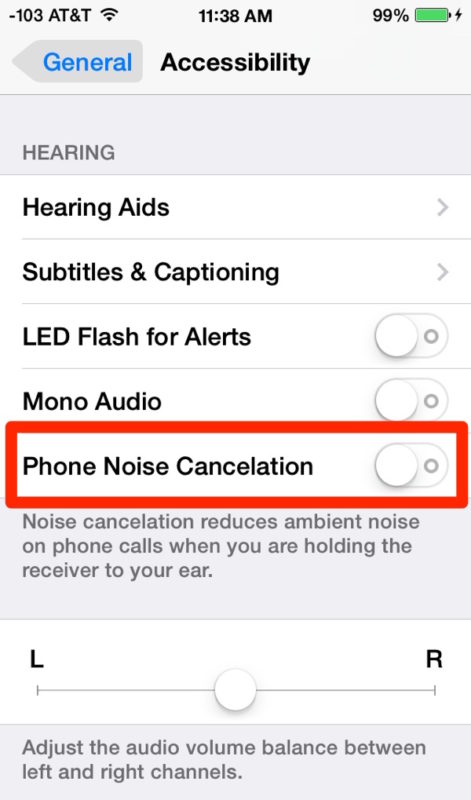
This is a feature that is worth testing with a phone call with someone that can give you feedback on the call quality, as it may actually make the problem worse on their end, but sometimes it can also improve sound quality. Try it out yourself and make that determination.
If you notice no improvement in call quality, for both you and the person on the other end of the call, then you should turn this feature back on again.
11: Check iPhone Sound Source and Sound Output Destination
If you use iPhone with Bluetooth devices or other accessories that transmit audio and sound, be sure you check the iPhone sound source.
The easiest way to do this is by accessing Control Center (For iPhone X, XS, XR and newer without a Home button: swipe down from the top-right corner to access Control Center. For iPhone 8, 7, 6, 5 with a Home button, swipe up from the bottom of the screen to access Control Center), then:
- From Control Center, long press or hard tap on the “Music” box in the corner
- Tap the button in the upper right corner, it looks like a concentric circle with a triangle, then make sure “iPhone” is selected as the audio source
This is particularly helpful if you use any Bluetooth audio accessory, as it’s possible that the iPhone audio is being transmitted to the other audio source rather than through iPhone itself.
12: Make iPhone Calls on Speakerphone
Making iPhone calls on speakerphone instead of against your head can be a solution for many users who face call quality issues with iPhone phone calls.
Putting an iPhone call onto speakerphone is easy; simply dial the number then tap the “Speaker” button on the iPhone phone screen.

You can also initiate iPhone calls with Siri on speakerphone by using a voice command.
If the call sound quality remains poor and your voice sounds muffled or you can barely hear the other caller, try putting the iPhone onto speaker phone mode. This will use different microphones and the call sound output will go through the iPhone speakers rather than the ear speaker.
If you like using speakerphone in general and find this a good solution, you can even set iPhone to have all phone calls on speakerphone, and that setting applies to both outbound and inbound calls.
13: Inspect & Clean Physical Obstructions, Lint, Gunk, Gum, etc
You should visibly inspect iPhone to make sure there is nothing physically obstructing the microphones and speakers on the device, then clean it up.
Sometimes you may find that pocket lint or some other gunk is covering a microphone or speaker, and that can lead to a reduction in audio quality on the device.
If the iPhone call sounds muffled or distant, often some object is covering or obscuring the devices audio input and/or output. Make sure the iPhone is clean and there is nothing stuck on it.
Crud in the speakers can result in muffled audio sound. Crud or gunk in microphones can result in you sounding muffled or distant when talking on the iPhone. Crud in the headphone jack can result in the iPhone being stuck in Headphone Mode. Crud and junk in the Lightning port can cause iPhone to not charge. Wipe off the iPhone, and clean out the ports and speakers if they’re covered in gunk.
14: Be Mindful of iPhone Cases
Some iPhone cases may obscure the iPhone speakers and microphones. This is particularly true with cases that are not specifically designed for an exact iPhone model, and often with cheap low quality cases too, but sometimes even the fancier expensive cases can obstruct a speaker or microphone. Regardless, an ill-fitting case or poorly designed case can lead to a reduction in call quality either through making the iPhone call sound muffled, or difficult to hear.
An easy way to test if the iPhone case is negatively impacting the call quality of your iPhone phone calls is to remove the iPhone from the case, and then make a phone call. If the call sounds fine with iPhone outside of the case, the problem is probably related to the iPhone case.
Replacing the case might resolve the issue, but sometimes simply taking iPhone out of the case and putting it back in again can fix these problems too.
You can also physically inspect the case to see if there’s any physical obstruction that may be causing the issue, covering of a microphone or speaker, or anything clogging a port or area where the speaker should be. You may find that lint or something similar has gotten stuck somewhere and is obscuring the speaker or microphone (lint and other pocket crud can also clog a headphone jack or Lightning port and cause the iPhone to not charge, a fairly common occurrence).
15: Reposition iPhone with Ear Speaker in Mind
Sometimes iPhone users may hold the iPhone to their head but unintentionally block or obscure the ear speaker, rather than placing the ear speaker against their ear canal. This can result in what sounds like very quiet phone calls, even if the iPhone volume is turned all the way up (the next time you’re on a call, repeatedly press the Volume Up button anyway to be sure the audio is not low).
The iPhone ear speaker is located near the very top of the iPhone and can be visibly identified, so try to put that near your ear rather than smushed against the side of your head or some other fleshy object.
16: Hold the iPhone near the bottom of the device
Sometimes changing how the iPhone is held can make a difference in call sound quality, and apparently some iPhone users find that changing how they physically hold the iPhone can impact the call quality.
This may be due to a variety of reasons, perhaps a finger or part of the face is inadvertently covering a microphone, or is pressing the volume down button, or something similar, but try simply holding the iPhone differently. It
For some users, simply adjusting how they hold the iPhone alone can make the difference between a call having decent audio and not.
17: Use Earbuds for iPhone Calls
The in-box bundled white earbuds that come with every iPhone can be used to make phone calls on iPhone, and they even have a built-in microphone.
Simply connect the iPhone earbud headphones to the iPhone, then put them in your ears and turn up the volume using the iPhone volume up button. Make a phone call as usual, and the phone call audio for your voice will be picked up through the white earbud microphone, and the caller/recipients voice will go through the earbud speakers instead of the iPhone speakers.
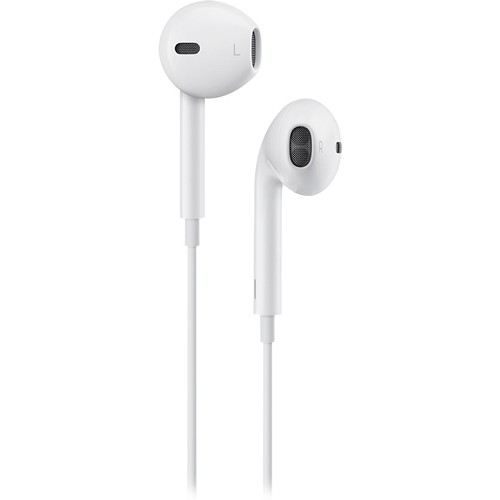
The added bonus to using earbuds for iPhone calls is that you can put the iPhone into a pocket or on a surface and effectively have a hands free phone call.
18: Disconnect and Reconnect to Bluetooth Speakers / Stereo
If the iPhone call quality is only bad over a Bluetooth speaker system, whether in a car or a home stereo, try disconnecting the Bluetooth speaker or stereo and then reconnecting to it again. This can often resolve spotty Bluetooth audio issues.
Toggling Bluetooth OFF and ON can have a similar effect, but sometimes directly targeting a specific Bluetooth device or stereo can resolve issues with that device as well.
19: Try FaceTime Audio Calling
If the person you’re talking to also has an iPhone, try making a call with FaceTime Audio instead of a regular cellular phone call. FaceTime Audio uses data for a VOIP call, and these calls can sound a lot more crisp and clear than a regular phone call, particularly if the cellular network is not great but you’re on a good wi-fi connection.
You can make a FaceTime audio call directly from the Contacts app or from tapping on a contact.
Be aware that FaceTime Audio calling will use the iPhone data plan if you’re not connected to a wi-fi network, and this could result in data use overages.
4 Additional iPhone Call Audio Problem Troubleshooting Tips
- If the iPhone had substantial liquid contact, it may be physically damaged as a result and a speaker or microphone may not work as intended, or something else in the device may be failing as a result of water damage.
- If the iPhone is physically damaged, with a broken screen, severe bumps, dents, dings, cracks, or otherwise, the iPhone may not be working as intended. Sometimes a broken screen can cover a microphone or ear speaker, and sometimes a dented case can impinge on a microphone or speaker. If the iPhone is physically damaged, consider this as a possibility of why call quality is bad
- If the iPhone sound quality is only not functional or bad when using headphones or earbuds, try these troubleshooting tips to fix headphone and earbud problems with iPhone
- If all else fails, consider contacting Official Apple Support, or an authorized Apple Repair provider and have them inspect the iPhone for failure or problems. It’s possible there is some other issue with the iPhone that is causing problems with audio quality, sound output, sound input, or the devices speakers or microphones
Did these tips work to resolve any iPhone call sound issues for you? Did you find another solution to call audio problems? Share with us your experiences in the comments below!


Mine’s an iPhone 6s+: calls were cutting out so you missed loads of the conversation. I tried the airplane on/off and turned off noise cancellation. Just had a perfect call! Thank you.
My issue was when I use iPhone XS on hands free. The person on the other end would get terrible feedback/sound quality. The fix was removing the cover.
PTP
24th Tip
My IPhone X suddenly started buffering while receiving or making calls. People couldn’t hear my clearly nor could I.
Tried most of the above 23 tips but failed and then thought of removing and reinserting SIM card which solved the problem😊
Iv got an iPhone 7. People say my calls are muffled. Iv tryed everything for them to here me. I don’t no what else to do with it. I even went into the shop and they were not very helpful
If you’re holding the iPhone to your head to talk, often someone can be covering the microphone with a finger, or a case, or their chin, etc, and that can make the iPhone sound muffled.
you suggestion of toggling airplane mode worked for my 8p, thank you so much!
iPhone X in this case… went through the list and audio quality is still lousy. Maybe apple will develop an app which will make my iPhone work like a actual phone!!!
What is cleaning duster? I tried all the steps but nothing has worked!!
Resetting the network settings worked for my phone. Thankyou. I’m so impressed I could do this alone in the kitchen at 0700. Without the kids helping 🤓 Tusen tak.
I tried all the common fixes listed on this page and all these other help pages with no resolution. I even tried cleaning the speaker with a brush as advised in several fix it lists and still nothing. I was finally going to give up and as last resort I sprayed cleaning duster on the speaker and guess what it worked! I hope this helps other iPhone users with the same problem as I have been dealing with the low call Volume for some time.
My iphone 7 128 gb its sound is not working during the call kindy help me please.
Excellent compilation.
This was the best, easiest to follow information site I’ve ever used.
Thanks for the kind words Hillary, I’m glad this helped you!
My iPhone 7 used to sound kind of bad on phone calls, never knew why. Case or no case, always the same.
I will say that the white earbud headphones can deteriorate and over time sound worse, so if you use those often you might want to check the cables and cords for damage. I switched a pair of those and the call quality and sound quality improved a lot when wearing the newer headphones.